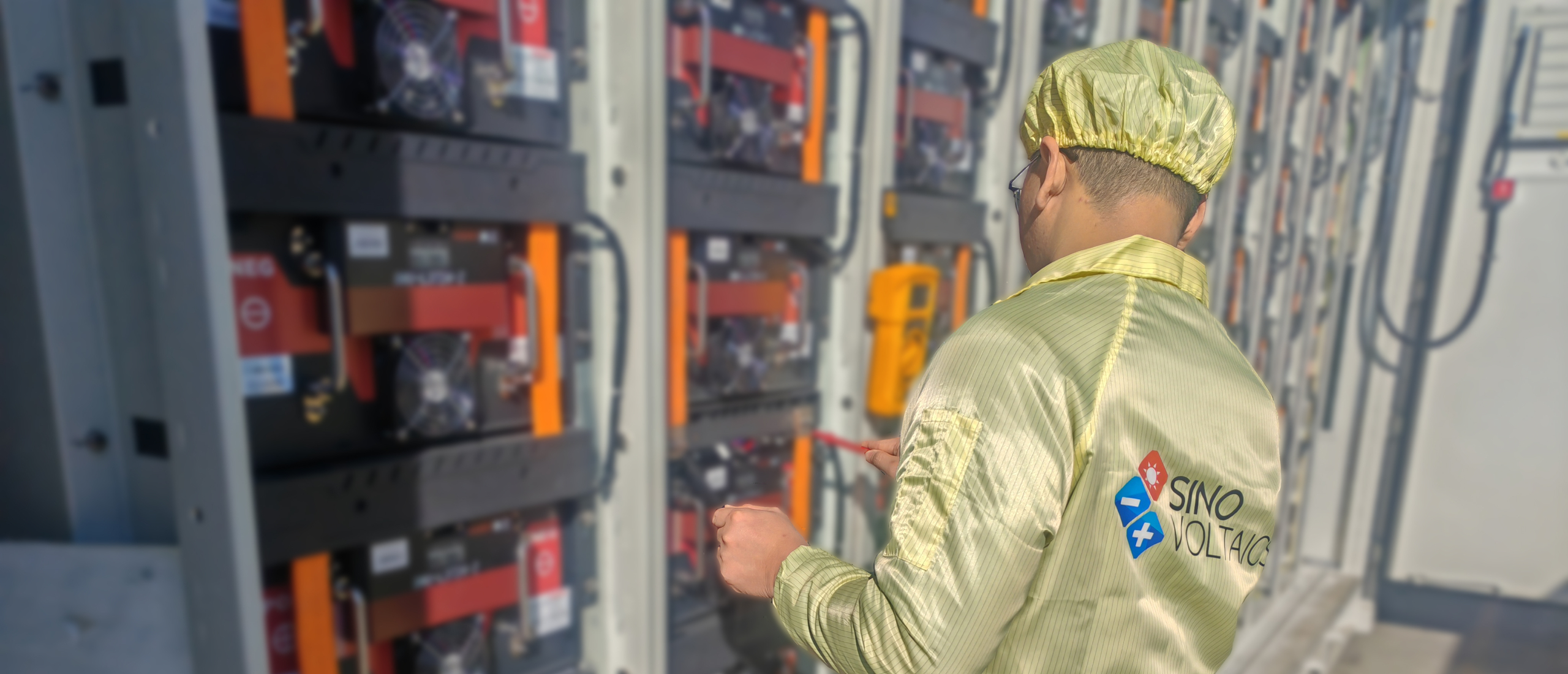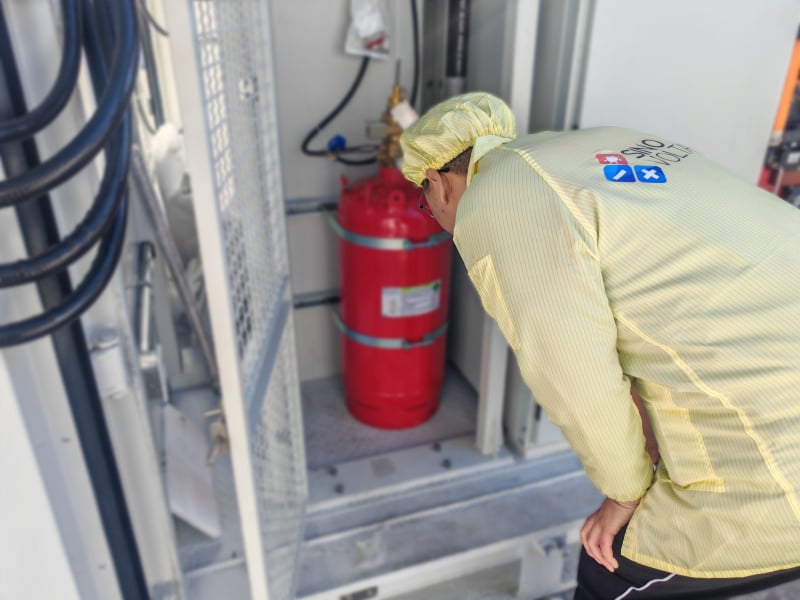
The Complete Guide to Battery Energy Storage Systems (BESS)
Introduction
Battery Energy Storage Systems (BESS) are a transformative technology that enhances the efficiency and reliability of energy grids by storing electricity and releasing it when needed. With the increasing integration of renewable energy sources like solar and wind, BESS plays a crucial role in stabilizing power supply, optimizing energy use, and reducing dependency on fossil fuels.
This guide explores all aspects of BESS, from system specifications and supplier selection to commissioning and maintenance. Whether you are a project developer, utility provider, or business owner, understanding BESS technology will help you make informed decisions about energy storage.
1. What is a Battery Energy Storage System (BESS)?
A Battery Energy Storage System (BESS) is an advanced technology designed to store electrical energy in batteries for later use. It consists of multiple components, including:
- Battery Modules: Store energy using lithium-ion, lead-acid, or other battery chemistries.
- Power Conversion System (PCS): Converts DC energy from batteries into AC electricity.
- Battery Management System (BMS): Monitors and manages battery health, safety, and performance.
- Energy Management System (EMS): Controls energy flow based on demand and grid conditions.
- Thermal Management System: Regulates temperature to enhance battery lifespan and performance.
BESS solutions vary in size and application, from residential energy storage units to large-scale industrial and grid-level storage facilities.
2. Benefits of BESS
BESS provides a range of advantages, making it a critical component in modern energy systems:
- Grid Stability: Balances supply and demand, preventing blackouts and voltage fluctuations.
- Renewable Integration: Stores excess solar or wind energy for later use, increasing renewable energy adoption.
- Peak Shaving: Reduces energy costs by discharging stored energy during high-demand periods.
- Backup Power: Ensures uninterrupted power supply during outages.
- Energy Arbitrage: Allows users to buy electricity during low-cost periods and sell or use it during peak pricing.
3. Types of Battery Technologies Used in BESS
3.1 Lithium-Ion Batteries
- Pros: High energy density, long lifespan, fast charging.
- Cons: Higher cost, potential thermal runaway risks.
3.2 Lead-Acid Batteries
- Pros: Low cost, well-established technology.
- Cons: Lower energy density, shorter lifespan.
3.3 Flow Batteries
- Pros: Scalable for large energy storage, long cycle life.
- Cons: Lower energy density, higher upfront cost.
Choosing the right battery chemistry depends on the specific application, budget, and lifecycle requirements.
4. Key Considerations When Selecting a BESS
Before investing in a BESS, consider the following factors:
- Capacity & Power Output: Measured in kWh (energy stored) and kW (power delivered).
- Depth of Discharge (DoD): The percentage of battery capacity that can be used without affecting lifespan.
- Round-Trip Efficiency: The ratio of energy output to energy input.
- Lifespan & Cycle Count: The number of charge-discharge cycles before performance degrades.
- Environmental Factors: Temperature, humidity, and protection against external conditions.
- Safety & Compliance: Adherence to IEC and UL certifications.
5. BESS Deployment and Applications
5.1 Residential Energy Storage
- Stores excess solar energy for use at night.
- Provides backup power during outages.
5.2 Commercial & Industrial (C&I) Applications
- Reduces peak demand charges.
- Supports microgrids and energy independence.
5.3 Utility-Scale Energy Storage
- Balances grid load and stabilizes frequency.
- Supports renewable energy integration.
5.4 Electric Vehicle (EV) Charging Infrastructure
- Supports fast charging stations.
- Manages energy distribution for EV fleets.
6. Installation & Commissioning of BESS
A successful BESS installation involves:
- Site Assessment: Evaluating space, grid connection, and environmental conditions.
- System Design: Selecting the appropriate battery size, PCS, and EMS.
- Safety Checks: Ensuring proper grounding, ventilation, and fire safety measures.
- Testing & Commissioning: Performing factory acceptance testing (FAT) and site acceptance testing (SAT).
 BESS Factory Acceptance Testing FAT Safety Test
BESS Factory Acceptance Testing FAT Safety Test
7. Maintenance & Lifecycle Management
Proper maintenance extends the lifespan and performance of a BESS:
- Regular Monitoring: Checking battery health, temperature, and charge cycles.
- SOC recalibration: Ensuring your State Of Charge calculation works properly.
- Firmware Updates: Ensuring the latest EMS and BMS software improvements.
- Thermal Management: Keeping optimal operating temperatures.
- End-of-Life Recycling: Safely disposing of or repurposing aging batteries.
Conclusion
Battery Energy Storage Systems (BESS) are revolutionizing the way we store and use electricity. From residential applications to utility-scale projects, BESS enhances energy security, supports renewable energy, and reduces costs. As technology advances, energy storage will play an even greater role in the transition toward a sustainable energy future.
By understanding the different components, benefits, and considerations of BESS, businesses and consumers can make informed decisions that optimize energy efficiency and contribute to a greener world.
To ensure the reliability and performance of your Battery Energy Storage System (BESS), comprehensive testing and inspection are essential. At Sinovoltaics, we offer specialized BESS inspection services, including quality FAT testing, quality audits, and component assessments, to help you mitigate risks and achieve compliance with international standards.
Our expertise in photovoltaics and BESS monitoring ensures that your energy storage solution meets the highest safety and performance benchmarks. Contact us today to learn how our BESS quality and inspection services can optimize your system’s efficiency and longevity.
